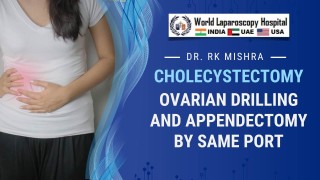Dual Polyurethane Mesh for Umbilical Hernia restores strength with enhanced durability
Add to
Share
1,450 views
Report
2 years ago
Description
When it comes to the treatment of umbilical hernias, a remarkable solution has emerged: Dual Polyurethane Mesh Repair. This advanced technique not only effectively addresses the hernia but also provides enhanced durability, restoring strength and support to the affected area. An umbilical hernia occurs when a portion of the intestine or abdominal tissue pushes through a weakened area near the navel. Traditionally, surgical repair involved suturing the weakened tissue or placing a single mesh over the hernia site. However, Dual Polyurethane Mesh Repair represents a significant advancement in the field of hernia treatment. Dual Polyurethane Mesh Repair involves the use of two layers of polyurethane mesh, a synthetic material known for its durability and compatibility with the body. This dual-layered approach provides additional reinforcement and support, reducing the risk of recurrence and improving long-term outcomes. The first layer of the polyurethane mesh is positioned underneath the weakened tissue, acting as a foundation for repair. It provides stability and strength to the weakened abdominal wall, preventing the hernia from recurring and reducing the chances of complications. The second layer of the mesh is placed on top of the weakened tissue, creating a barrier that further reinforces the repair site. This added layer offers enhanced durability and support, promoting optimal healing and reducing the risk of future herniation. One of the key benefits of Dual Polyurethane Mesh Repair is its long-lasting effectiveness. The polyurethane material used in the mesh is known for its resistance to degradation and stretching, ensuring that the repair remains intact and provides reliable support over time. This durability minimizes the need for subsequent surgical interventions and offers patients peace of mind. Additionally, the use of polyurethane mesh in Dual Polyurethane Mesh Repair has been associated with a lower risk of complications, such as mesh-related infections or mesh migration. The material's biocompatibility and reduced inflammatory response contribute to improved healing and a smoother recovery process. It is important to note that Dual Polyurethane Mesh Repair is a surgical procedure that requires the expertise of a skilled surgeon. Patients should consult with their healthcare providers to determine if they are suitable candidates for this technique, as individual factors may influence the choice of hernia repair method. When it comes to addressing umbilical hernias, Dual Polyurethane Mesh Repair stands out as a highly effective treatment option that offers remarkable durability. This advanced surgical technique not only restores strength and support to the affected area but also significantly reduces the risk of recurrence. Umbilical hernias occur when abdominal tissue protrudes through a weakened area near the navel. In traditional surgical repair, a single mesh is typically used to reinforce the weakened tissue. However, Dual Polyurethane Mesh Repair takes hernia repair to a new level by utilizing two layers of polyurethane mesh, providing added strength and enhanced durability. The first layer of polyurethane mesh is carefully positioned beneath the weakened tissue, serving as a solid foundation for repair. This layer provides stability and support to the weakened abdominal wall, effectively preventing the hernia from recurring and reducing the likelihood of complications. The second layer of polyurethane mesh is placed on top of the weakened tissue, acting as a protective barrier and further reinforcing the repair site. This additional layer enhances the overall durability of the repair, promoting optimal healing and minimizing the risk of future herniation. Dual Polyurethane Mesh Repair offers several advantages over traditional repair methods. The use of polyurethane mesh, a synthetic material known for its durability and biocompatibility, ensures long-term effectiveness and resistance to degradation. This translates to a reduced need for revision surgeries and improved patient outcomes. Furthermore, the biocompatible nature of polyurethane mesh minimizes the risk of complications commonly associated with other mesh materials, such as mesh-related infections or migration. The material's compatibility with the body promotes better healing, reduces inflammation, and contributes to a smoother recovery process. It is essential to consult with an experienced surgeon to determine the most suitable hernia repair technique for each individual case. Not all patients may be eligible candidates for Dual Polyurethane Mesh Repair, and the choice of repair method depends on various factors specific to each patient's condition and overall health. In summary, Dual Polyurethane Mesh Repair for Umbilical Hernia offers a highly effective and durable solution for patients seeking relief. By utilizing two layers of polyurethane mesh, this advanced technique restores strength and support to the affected area with enhanced durability. With its remarkable outcomes and reduced risk of recurrence, Dual Polyurethane Mesh Repair represents a significant advancement in hernia repair, providing patients with a reliable and long-lasting solution. In conclusion, Dual Polyurethane Mesh Repair offers a highly effective and durable treatment option for umbilical hernias. By utilizing two layers of polyurethane mesh, this technique provides enhanced strength and support, reducing the risk of recurrence and improving long-term outcomes. With its promising results and advanced durability, Dual Polyurethane Mesh Repair represents a significant step forward in the field of hernia repair, offering patients a solution that restores strength and support to the affected area.
Similar Videos






